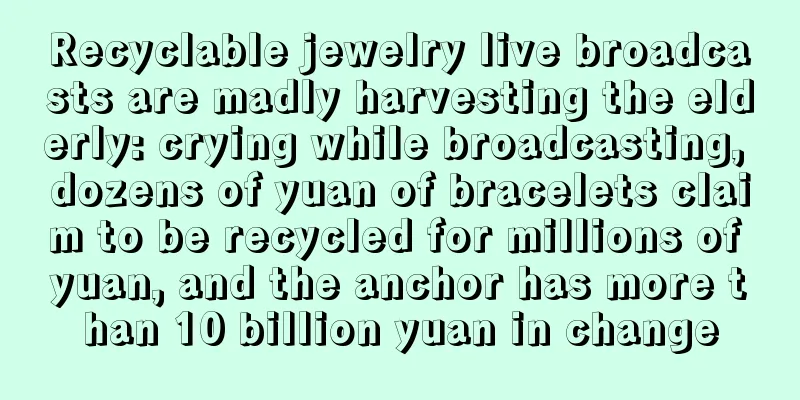5 marketing common senses that most business owners and CMOs tend to overlook!

This is my first post since I started working. I want to share with you some of my recent simple brand notes and thoughts. 1. The phenomenon of so-called Internet celebrity hits does not reflect the material needs at the bottom of Maslow's pyramid, but the spiritual needs at the top of the pyramid.Many people say that those born after 1995 and 2000 are Buddhist, but when it comes to consumption, they are able to face up to their consumption desires better than those born after 1980. These young people who "say one thing but do another" advocate Buddhist health care, while finding various ways to satisfy their consumption desires: they have afternoon tea with friends when they have nothing to do, they treat themselves to a cup of HEYTEA when they work overtime, they go to Internet-famous restaurants for dates on weekends, they travel at least twice a year, they raise a master instead of a child, and each of them has one or two expensive hobbies. What should I do? The growing consumer demand and limited income have led to polarization in consumption behavior among young consumer groups: on the one hand, for some high-frequency daily consumer goods, they choose to "downgrade consumption", are thrifty, focus on cost-effectiveness, and are unwilling to pay for brand premiums easily. On the other hand, they have obvious "consumption upgrades" in some low-frequency but personality-enhancing consumer goods, and go to boutique coffee shops to drink coffee. I call this polarization "social monetization": all consumption behaviors that are not suitable for display on social media are downgraded, such as daily facial masks or daily skin care products. Consumer products and consumption venues that are cool, good-looking, and suitable for posting on social media can enjoy the social media premium. This also explains why Internet celebrity restaurants spend more time on decoration, dish presentation and check-in wall design rather than on the taste of the dishes. In a nutshell, the so-called "face value economy" and the phenomenon of various Internet celebrity hits do not reflect the material needs at the bottom of Maslow's pyramid, but the spiritual needs at the top of the pyramid. Behind it, there is a strong social attribute of "seeking attention", which reflects the "loneliness" of young people born after 1995 and 2000. 2. Marketing is about creating user-perceived valueThere is an obvious phenomenon that many companies spend a lot of money on product research and development, but consumers do not buy it. The reason is that consumers cannot perceive the value of the product, or the perceived cost is greater than the perceived benefit. For example, there is a restaurant that grows its own vegetables. Although customers like them very much, the research and development of this dish is time-consuming and laborious, and the cost is 100 yuan per pound. When customers order a portion, it is only a few hundred grams, and it is gone with just one chopstick. Customers are always dissatisfied with the quantity, and customers don’t know the effort behind this chopstick of dish. As a result, when they settled the bill, they lost money, and finally had to take the dish offline. Although this restaurant has done a lot, it has not communicated the value of its products and still expects customers to discover the "potential value", which is obviously wishful thinking. So how can you make customers feel the value of your product? For example, when Lao Xiang Ji was upgrading its brand, it highlighted the 180-day free-range chicken and Nongfu Spring in terms of product selling points. Everyone knows about Nongfu Spring, and consumers can perceive the difference between free-range chicken and feed chicken. In other words, Lao Xiang Ji does not change the physiological and functional experience of the product delivered to consumers, but it amplifies the perceived value (premium part) of the product. Customers are not that complicated. They can intuitively experience the value of a product through their five senses: hearing, vision, touch, and taste. They can understand based on common sense and directly address the customer's real needs, making them feel that the money is worth spending. Only then will customers be willing to pay. So, when you are busy promoting your product, have you ever stopped to think about which step of marketing you are doing? Are you doing the marketing in the most effective way? 3. Just-in-time demand is the key to sustainable businessMany people like to emphasize that the products they make are hot-selling products, but in fact, there are hot-selling products everywhere. I always think that before creating a hit product, you should ask yourself three questions: Why do consumers buy from you? Are your customized hit products what consumers want? Or are they what 60% of the target user group want? To build a brand , you must first create urgent demand, find the users’ “pain points”, meet “urgent needs”, and also pay attention to high-frequency consumption. For example, those who love beer can drink beer together (happy), those who are afraid of getting a sore throat can drink Wanglaoji, and the energy consumption of Midea air conditioners can be as low as 1°C overnight. The idea they convey is that solving pain points is like providing timely help, and it directly hits the user's senses. So either tell the user what problem your brand can help him solve, or remind the user what problems he will face in life if he doesn’t buy me, and give the user a reason to buy it. 4. A brand must not come out according to the old model, but must be a more modern and innovative wayYou can't find new continents by following old maps. So, as the title suggests, what is a more modern way of innovation? For example, traditional tea focuses on the mountain and the place of origin, and then looks for users after making good tea. However, the new brand Xiaoguan Tea’s strategy is to first lock in the target group, then design products and packaging according to the needs of the group, and strongly promote the brand. After occupying the market, it traces upstream, establishes factories for standardized production, and builds ecological demonstration tea gardens for large-scale planting. This approach really made the small can of tea popular. Of course, many people’s criticisms of Xiaoguan Tea come from the formulaic summary of the projects its leader has managed in the past, and they believe that Xiaoguan Tea is here to collect IQ tax. But if you look deeper, you will find that the more incomprehensible the model is, the greater the opportunity, but of course the higher the risk. For example, people don’t understand why people buy such cheap products on Pinduoduo? Why is Miniso’s business model so popular? These are essentially the same as you don’t understand why people buy such expensive tea. This is not the point. The point is that I think what Xiaoguan Tea really wants to do is to become a leading brand in the tea industry and define and lead its industrial standards. Ignited by Xiaoguan Tea, the reshuffle of the tea industry has begun. This is an irreversible trend. More Xiaoguan Teas will be born in the future, and Xiaoguan Tea is just one of the paths. This is also what all our industries should do as China's economic development has progressed. The greatest value of Xiaoguan Tea to the tea industry lies in that it denies the original traditional model, makes a new breakthrough, dares to be the first, and has achieved branding on the market side, industrialization on the processing side, and ecology on the upstream side, driving the upgrading of the entire industry. This is not just about selling tea, but about building a tea industry. 5. Understanding “consumer intent” is more scarce than the attention economyIn an era of constant innovation and disruption between user needs and satisfaction, many companies are easily anxious and don't know how to interpret the endless stream of phenomena. From selling the essence of the product - selling a sense of security - selling quality - selling "appearance" - what are we selling now? My answer is: what is sold is the added value beyond the product’s functions, such as fun, content, and cultural value attributes. For example: When we go out to have a meal now, it is not just about being full, but more about whether the meal makes me or my friends enjoy it - behind this enjoyment, different values are provided. For example: when buying a pair of sneakers, it is not enough to just look at whether they are good-looking or durable, but also to look at the value proposition behind the brand - such as Nike's "Just do it", which advocates a spirit of daring to take risks and do things. For example: when buying a mobile phone, people do not consider making calls or surfing the Internet, but other psychological needs that the phone brings. People buy iPhone X or Huawei phones not only because they are easy to use, but also because of the sense of honor and identity that the phone brings, or because it is a trend. Therefore, for many practitioners in brand marketing, product design and service experience, what is more scarce than the attention economy is understanding "consumer intent" and how to continuously give "meaning" to their product designs, thereby generating interactions and influencing consumer behavior. The above are some of my recent thoughts. Let us encourage each other. Author: Sister Mulan talks about brands Source: WeChat public account "Mulanjie (ID: mulanjie-)" |
<<: There is no ceiling for those who understand brand operation
>>: Taobao opens WeChat payment, Internet giants accelerate the demolition of barriers
Recommend
What is German WEEE? What is the certification?
When doing cross-border e-commerce, the products t...
What is an Amazon courtesy refund? What are the reasons for a refund?
Many netizens like to buy goods on the Amazon plat...
The underlying logic of the three major sales
Nowadays, various products are highly homogenized,...
How do individuals carry out the cross-border e-commerce process? How do I enter Tiktok cross-border e-commerce?
To successfully enter this field and build a susta...
Without WeChat and price war, how did Luckin Coffee expand into Southeast Asia?
In the Southeast Asian market, Luckin Coffee did n...
Memories and reflections: My years in a major Internet company
This book reviews the author's career in a lar...
How to register for Lazada P card? Registration details
Almost all merchants who open stores on Lazada wil...
What are Amazon's compliance policies? What should I follow?
If you open a store on Amazon, you need to abide b...
7 real cases about growth, I wrote them into small stories to share with you
How can self-media accounts achieve traffic growth...
The traffic of corporate professional accounts has been too low for a long time. How to determine the reason?
I have been working hard on content creation, but ...
With over one million followers in 10 days, can an “ordinary person” become Yu Wenliang?
Under the wave of the Internet, every ordinary per...
Analysis of the hot articles in Xiaohongshu in October
What are the hot articles on Xiaohongshu in Octobe...
Is it illegal to freeze a bank card for foreign trade payment? What should I do if it is frozen?
When doing foreign trade, you need to understand t...
The business revelation of Ideal Auto
The automotive industry is one of the most competi...
What documents are needed for a company to settle foreign exchange? How long does it take for a company to settle foreign exchange?
Foreign exchange settlement by enterprises refers ...









